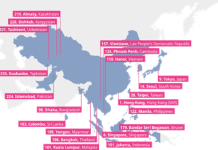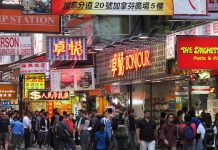One of my pet peeves of being a heavy traveller is the need to renew my passport every several months. That, and immigration officers who have an innate need to mark their territory by stamping over an entire page of passports.
Renewing passports and travelling across borders are good ways to gauge the efficiency and business friendliness of countries and governments. In Malaysia for example, passport renewals now take one hour tops. That’s a quantum leap from the 80s when it used to take 3 days. In Indonesia and Philippines, the reverse is true. Perhaps because of the need to maintain a large bureaucracy to keep people employed and away from the streets, convoluted processes are built into the system to ensure more people get a stab at being difficult, and to keep a healthy dose of respect of the public for authority. India has notoriously one of the worst bureaucracies in the world – so no surprise that passport renewal and visa application is among the longest and most complicated in the world. Unless you are willing to dish out some ‘priority money’, thereafter which your application get processed speedily and effortlessly.
How your luggage is handled is also a good gauge of what to expect when doing business in different countries. In Hong Kong, I never had to wait for more than 10 minutes for my luggage to arrive (and that’s when travelling on economy), despite that airport being one of the busiest in the world. Malaysia and Singapore aren’t all too bad – with luggage arriving on average between 15 to 20 minutes after disembarkation. In countries like Indonesia and Philippines – you guessed it – luggage takes almost forever to arrive. And often with wheels or other parts of the bag missing. In China, despite the large volume of domestic and international travellers, airports are generally very efficient – and operate with military precision. I now make it a point to have my luggage shrink wrapped when travelling to less than efficient airports. And where possible, to only carry hand luggage.
All these are rather perplexing, given the fact that most airports use the same equipment from the same vendors. Aircraft and airport operations are very much governed by international regulations and decades of best practices. In short, if one airport can get your bag from the aircraft to the conveyor belt in less than 10 minutes, so could all the others. Yet we see a huge difference from country to country.
It all boils down to cultural perception of urgency and personal responsibility.
Take Hong Kong for example. You will be hard-pressed to find locals standing on escalators. People walk up escalators. Rush hours at subways are a sight to behold. People run from train to train. Every minute saved is a minute earned.
Nearer home, people chat leisurely on escalators, rush hour or not. And often stand in front of them, blocking everyone else.
Again in Hong Kong, cooks in local cafes or ‘char chan teng’ typically start cooking as you order so by the time you are done with your orders, the first items would be ready. So, no you can’t change your orders after placing them, for precisely this reason. While lunch hours last between 1 to 2 hours, you won’t see people occupying their char chan tengs’ seats for any longer than 20 minutes.
Nearer home, people can spend that same 20 minutes on just deciding what to eat.
Efficiency isn’t just about system and procedure. Or having the latest software in town. It’s about people accepting personal responsibility to get things done, in the shortest time possible.
























